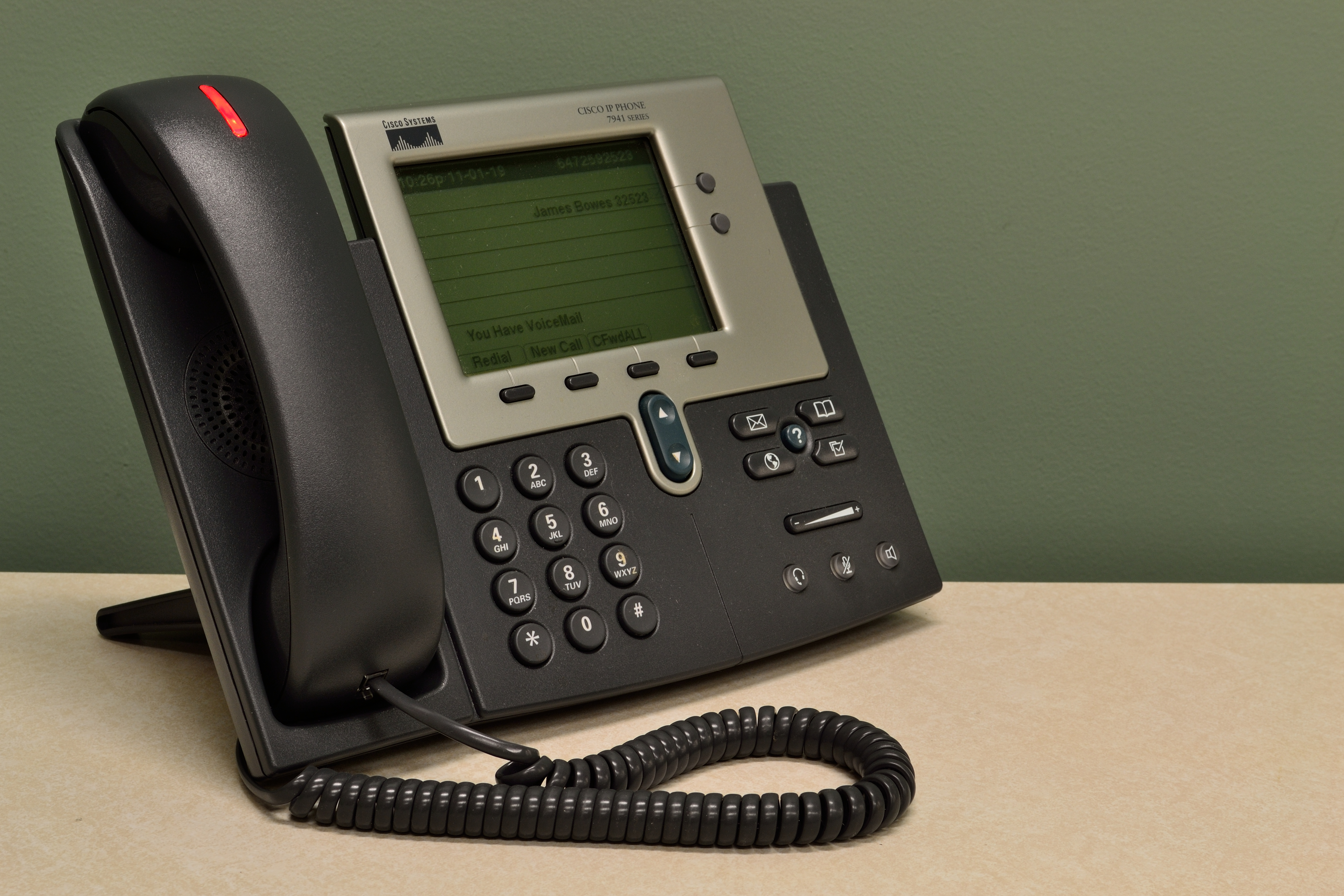Voice Over Internet Protocol, often referred to as VoIP, is a set of standards used to make phone calls through the Internet. A high-speed internet connection is mandatory for this system to work. VoIP services can call any device with VoIP services or regular phones with phone numbers, with corded telephones as the exception to this.
VoIP makes a phone call by converting the voice of an individual from one device to another device while accommodating the type of signal the device receives. To do this, VoIP compresses the digital signal produced by the initial voice and delivered it to the opposing line through a SIP server, a VoIP service provider. When the compressed signal is received on the other end, the data is uncompressed to accommodate the type of device and method used to make the VoIP call.
It is possible to make VoIP phone calls directly from any device including computers, VoIP phones, or typical phones. On a computer or laptop, a software and functioning microphone is required. The software would connect and translate the provided voice audio into another signal when necessary. The software is generally a form of IP address to allow the voice message to be successfully delivered across the internet. VoIP phones can directly connect to the internet and make phone calls. When using everyday phones, an analog telephone adapter (ATA) needs to be attached to successfully connect to the broadband network.
VoIP Features and Benefits
In many aspects, VoIP is preferred as it has more features and functions than a typical phone. VoIP functions mainly benefit functioning offices and companies to make communication more efficient while accessible at any time and place. Some of the advantages include those listed below:
- Unlimited Calls between the US and Canada
- Unlimited digital faxing
- Automatically redirects to the correct extension in a company VoIP line
- Voicemail conversion to emails, recording, and transcription of messages that can be shared with multiple individuals.
- Able to call multiple individuals at the same time.
- Real-Time updates of who is available to call.
Disadvantages of VoIP
VoIP may save unnecessary phone service charges but because VoIP requires an ongoing connection to the internet, it is not possible to use VoIP during power outages with no backup power support. To combat this initial problem, VoIP phone devices are provided with additional battery backup to allow access to VoIP service during power outages for additional hours. In addition, VoIP does not always offer directory assistance that lists individuals and businesses.
911 emergency calls operate differently through VoIP compared to typical phone calls. Not all VoIP is capable of connecting directly to the 911 emergency line. While these cases may be hardly impossible, it is important to take this note into consideration and be aware of the consequences of relying on VoIP systems. An alternative for VoIP systems is enhanced 911. E911 is the ability to contact authorized figures through an emergency call from any bandwidth. The process contacts enhanced 911 comcast stations similar to how typical phones would contact 911. The phone call is redirected to a public safety answering point which delivers the phone number and address registered on the VoIP device.
History
Before VoIP technology was able to exist, multiple other functions and programs were required to become the final product known in the present. In 1925, AT&T and Western Electric company collaborated with Bell Laboratory to explore the possibilities of improving communication accessibility nationwide. In 1938, they developed the Vocoder that was able to analyze and replicate human voices. Then, in 1969, the Advanced Research Project Agency (ARPA), an organization responsible for creating military technology developed ARPANET which became the earliest version of adopters using IP network protocols to connect computers from different locations. In 1974, a voice data packet was successfully able to be transmitted from one device to another with linear predictive coding, the foundation of VoIP. Finally, in 1989, Brian C. Wiles release a program called NetFone, later known as Speak Freely, in a public domain that became the first software-based VoIP phone.
Mobile VoIP was first introduced in 2005 by Calypso Wireless through the release of the first mobile phone able to connect to Wi-Fi. This led to the first mobile VoIP application, Truphone, to be launched in 2006, accessible with any phone device. This application allowed users to make phone calls by connecting to the internet with SIP. Because of the struggle s of isolation during the pandemic, more improvements were made to VoIP technology such as video chat functionality, calls with more than one person on a line, virtual voicemail, and accessibility through softphone applications.
UCaaS Explained
UCaaS, Unified Communications as a Service, is a communication service through the cloud that allows enterprise telephone, audio/video conferences with multiple participants, unified messages, and automated business procedures through voice automation. UCaaS share almost the same functions as VoIP technology. Both are accessible from anywhere as long as the device is connected to the internet/cloud. VoIP and UCaaS are not the same. VoIP is responsible for many of the functions of UCaaS. UCaaS is responsible for the functionality of VoIP, video conferences, messages, and other communication platforms.
UCaaS has multiple benefits that have been improved over the past few years. One of the many benefits is secure communication between workers. UCaaS uses encrypted communication channels that safeguard data being transmitted between different servers. UCaaS can build a unified working environment from different locations in a city to individual branches in different states. In addition, customers can receive a better service experience as communication becomes a key factor to success. Customers can communicate with companies more efficiently through any platform and get a response as soon as possible.
From My Perspective: Nicole Huang
VoIP has been improved to the point where there is no need for any big changes, except for including a few more functions that could make communication more efficient than it already has. The VoIP system is used as the basis for many current communication platforms and will continue to do so in the future.
Sources
https://www.fcc.gov/general/voice-over-internet-protocol-voip
https://getvoip.com/blog/2014/01/27/history-of-voip-and-internet-telephones/
https://bebusinessed.com/history/voip-history/
https://www.gartner.com/en/information-technology/glossary/unified-communications-service-ucaas
https://www.xfinity.com/support/articles/about-e911
https://www.bandwidth.com/glossary/enhanced-911-e911/#:~:text=With%20Enhanced%20911%20Service%20





